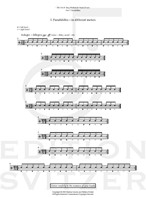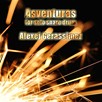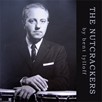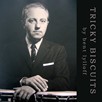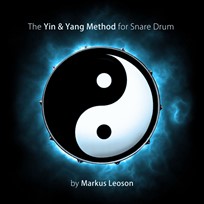
The Yin & Yang Method for Snare Drum
Composer: Markus Leoson
Instrument: Snare Drum Method Book
Level: Advanced
Published: 2020
Price: €35.00
Item details
-
Description +
-
The Yin & Yang Method for Snare Drum
or Prof. Leoson´s advanced Studies for Snare Drum
Preface
I have been writing this book because I realized that I lacked a full concept book of just exercises for all the aspects of the snare drum technique, both for myself as well as for my students. I believe that it is very important for the technical development to study in detail what every hand does for itself. The idea was also to enable a great flexibility in each hand in order to smoothly be able to execute every problematic bar or notes that the player could possibly encounter.
The book is in first hand written for the classical/orchestral/soloist snare drummer but I am sure that many rudimental or drum set players as well could enjoy and get helped from most of the exercises in this book. It is supposed, with all due respect, to follow in the footsteps of the great G. L. Stone and somehow be a Stick Control 2.0 book. The Snare Drum is really the percussionist´s first instrument to master and therefore is this technique so important to achieve properly in order to also be able to play for instance timpani and mallet instruments well.
Why call the book ”The Yin & Yang Method for Snare Drum”?
The reason is because the exercises always go from hand to hand and there are really an equal amount of ”lefts” and ”rights” in the book. The exercises also deliberately start with the left hand (which is for most of all players the “weaker“ hand) and we need to support this hand extra to strengthen and trust it so that it will almost become as secure as our “stronger“ hand (usually the right hand for most of all players). Another reason is that almost all other snare drum literature always begin exercises with right hand and people tend to forget to also start the exercises with left hand. After having “mastered“ this book you will notice that when you go back to other snare drum schools they are probably now much easier to execute. However I find many of them too long with often too long exercises, this is why the exercises in this book are shorter so that you could immediately play them by memory and feel and listen to what you are doing instead of being occupied of merely just reading the exercises.
I have also tried to get to the core of the technical problems that comes with learning this great instrument. Therefore I have tried to “condense down“ different kinds of exercises (and written them truly difficult and tough to master) into some really useful ones that strengthen the working muscles, help to better control the hands and I´ve also strived for more quality than quantity. Exercises in 4/4 have I deliberately tried to avoid because I´ve noticed that many players and students tend to stop listening to what they are doing when playing too “square” exercises as well as I have avoided to write 4 or 8 hand movements per quaver in rolls – many times they start to sound uneven because normally the leading with the stronger hand tends to be heard. Therefore I recommend, when possible according to tempo and dynamic, to play for instance 5, 7 or 9 hand movements per quaver in the rolls.
Finally I wanted to give the eager snare drum player usable “keys and tools” how to solve different technical problems and challenges that everyone sooner or later will meet in their musicianship.
How to practice “The Yin & Yang Method for Snare Drum”
This is for sure one of the ”nerdiest” snare drum books ever written but I believe that it´s very important to go deep into the details of the players technique, almost checking things at the ”atom level”. That´s why I also encourage the student to also be their own teacher, especially together with the tool more or less everybody possess today – the Smartphone. Develop the habit to record yourself several times weekly with the video function and to critical analyse what you see and what you hear. Also don´t hesitate to record smaller exercises, parts of pieces, single phrases and not always wait until you can play a whole piece through. Be curious how your playing really sounds and work.The mistake many players and students do is that they play their material too fast too soon – faster than what they could really control, don´t do so and fall into that old trap just because you overestimate your level and ability! Rather start the exercises too slow than medium fast because when you play faster than you can control, you program your hands to always play with a less reliable technique and this takes a long time to repair. Play rather all exercises starting very slow and with a sound so even as possible so that one really couldn´t be able to hear any hand changes. It is also very important to play and practise with relaxed low hand and shoulder positions and always control all strokes without any tendency to shiver. Therefore close your eyes a lot while playing the exercises by memory and really feel and listen to your sound and what you are doing - practising with closed eyes also helps you to easier detect unwanted tensions in your body as well as feel the natural and wanted movement. Or sometimes just look up when you are playing and avoid staring in the notes. Besides that try to learn to just enjoy playing exercises real slowly with full control, here you could sometimes also play half of some exercises with repetitions.
Practice also exercises, etudes and solo pieces using your voice counting the meters out loud or simply just say ”tick” for every quarter. Or put your metronome in half notes tempo and on 2 and 4, off beats or syncopations. This will help you to hear more intensely all quarters and eight notes ticking in your head which will lead to more rhythmical stability. Be also sure that notes with a marcato accent stand in a truly clear contrast to the notes without.
A well achieved double stroke roll (open roll) technique comes very handy on more or less all other percussion instruments occasionally – just playing two notes in a row with one hand, which quite often is necessary on for instance timpani and mallet instruments you need to be able to play the second note truly equal strong as the first one. I cannot stress enough the importance of practicing these double stroke roll exercises a lot and also loud and as even as possible! Be sure that you don´t change your grip when you go from single strokes (rhythms) to rolls (open or buzz) and back. Especially check your pinkies at that moment because they have a tendency to straighten out and usually it´s also the weaker hand that does that more often. Pointing pinkies are not helping (even if you would think so) but just taking control and efficiency from your playing. Always occasionally look at your hands, fingers and wrists while practising in order to see that they “behave” as they should and regularly video record yourself!
Check that your sticks do not come more than around 2 cm apart from each other in general playing and mainly just use your wrists to lift and lower the sticks (stiff wrists with arm movements could eventually join in first when playing really loud rolls).
These Y&Y exercises are also written in this way for at the end get a smoother, cleaner and more even roll that works in every speed and every dynamic and this is really the biggest challenge playing the Snare Drum, apart from also being able to control all kinds of grace notes in different tempi and with different dynamics.
Besides all this I strongly recommend to practise mostly on a real snare drum and not on a practice pad when it´s not necessary. This is in order to get the real feeling of how the skin and sticks respond to each other and to get the real skin touch and the real feeling of how it is to for example play controlled pianissimo figures, which requires truly a lot of practice. Rather use ear plugs when practising than a practise pad for saving your ears.
For the daily warm-up routines I recommend the Pre-tremolo and the Muscle building exercises and play them with not too light sticks and thin tips, starting slow...
The “weaker” hand
Overall practice a lot more with your “weaker” (usually the left) hand in order to be able to rely and trust it, although it will never be as good as your “stronger” (usually the right) hand. Challenge your weaker hand daily – let it play triangle or tambourine for instance or let it play the more important single notes that you have to play on other instruments and why not in the everyday life try to brush the teeth, make sandwiches, iron clothes etc. with the weaker hand.
The Stickings
Several stickings that I have written, are hard and somewhat unlogical but they do very good in the long run for your technique but still try them out at first very slow so that you totally can control every part of the figures. See them as these exercises they are and of course feel free to use other stickings as well. Sometimes the exercises also start with the harder sticking version and ends with the easier one – it´s because you should focus on mastering the more difficult ones in order to get the easier stickings later feel even easier than before.
Finally I am truly grateful to Johan Svitzer for all his efforts and his great cooperation in the making of this book.
Markus Leoson
Weimar, August 2020
Dedicated to all my students and my teacher Björn Liljequist
-
-
Instrumentation +
-
Contents
Part 1 Paradiddles
I. Paradiddles – in different meters
II. Paradiddles – with changing rhythms
III. Paradiddles – with marcato accents
IV. Paradiddles – with both marcatos and changing rhythms
Part 2 Grace Notes
I. Grace notes exercises
II. Grace notes after the main note (hand by hand)
III. Grace notes after sixteenths (hand by hand)
IV. Rhythmical exercises with grace notes
Part 3 Soft-Loud Strokes
I. Controlled soft-loud-soft strokes (hand by hand)
II. Controlled loud-soft-loud strokes (hand by hand)
III. Combined soft-loud-louder strokes (hand by hand)
Part 4 Single Strokes
I. Single stroke exercises – hand by hand
II. Single stroke exercises – with both hands
III. Single stroke exercises – with changing dynamics
Part 5 Double Strokes
I. Double stroke exercises
II. Muscle building double stroke exercises
III. Double stroke exercises – with accents
IV. Double stroke exercises – with changing dynamics
V. Double stroke exercises – with grace notes
Part 6 Three Strokes
I. Three stroke exercises
Part 7 Buzz Strokes
I. Buzz stroke exercises
II. Muscle building buzz stroke exercises
III. Buzz stroke exercises – with accents
IV. Buzz stroke exercises – with changing dynamics
V. Buzz stroke exercises – with paradiddles and marcatos
Part 8 Double and Buzz Strokes
I. Exercises combining double and buzz strokes
Part 9 Tremolo/Rolls
I. Pre-tremolo exercises
II. Tremolo exercises
III. ”The Audition Roll”
IV. How to end an untied roll
V. Exercises with untied rolls
-
-
About the composer +
-
Prof. Markus Leoson, born 1970 in Linköping, Sweden demonstrated an early interest in, and aptitude for, percussion. He was admitted to the Royal College of Music in Stockholm at the tender age of 15 and graduated four years later. In 1990 he was taken on as a percussionist with the Royal Opera Orchestra, 1991 he was employed as solo timpanist at the Danish Radio Symphony Orchestra but returned to the Royal Opera Orchestra where he became solo timpanist 1993 and stayed there until 2008 when he was appointed professor at the FRANZ LISZT Hochschule für Musik in Weimar, Germany.
Today he is an internationally sought-after solo percussionist but also gives frequent master classes at music colleges and festivals.
In addition to the Swedish Soloist Prize that he won 1995, he has won international music competitions such as the 1997 EBU IFYP (International Forum of Young Performers) Competition in Bratislava and the ARD International Music Competition in Munich with a 2nd Prize (no 1st or 3rd prize was awarded). In 1995 he took home 2nd Prize in the Nordic Soloist Competition in Reykjavik.
For the season 1996-97 he was appointed Artist in Residence at the Swedish Radio and did both concerts and several radio recordings. His debut concert in the Berlin Philharmonic Chamber Hall in June 2000 was broadcasted on German and Swedish radio.
Markus Leoson has appeared as a soloist (also in radio and television) around Scandinavia, Europe and Asia and he has performed with orchestras as St. Petersburg Philharmonics, Swedish Radio Orchestra, Stockholm Philharmonics, Oslo Philharmonics, Tampere Symphony Orchestra, Icelandic Symphony Orchestra, Gothenburg Symphony Orchestra, Malmö Symphony Orchestra, Norrköping Symphony Orchestra, Helsingborg Symphony Orchestra, Royal Opera Orchestra of Sweden, Koszalin Philharmonics, Beijing Symphony Orchestra, Ostrobothnian Chamber Orchestra, Nordic Chamber Orchestra, Lapin Kamariorkesteri, Stockholm Symphonic Wind Orchestra, Östgöta Symphonic Wind Orchestra, Uppsala Chamber Orchestra, Philharmonisches Orchester Plauen-Zwickau, BBC National Orchestra of Wales a.o.
Percussion, his first solo CD was released on the Caprice label in 1996. He has since released many others, including Markussion (nosag CD 071) nominated for the 2003 Swedish Grammy Awards and in 2006 Malletiana. The latest, Colludo (nosag CD 129), is recorded with Uppsala Chamber Soloists. He has also recorded several duo and chamber music CD´s with different artists as well as participated in many orchestral CD´s.
Markus Leoson´s repertoire is uncommonly eclectic, and over the years he has worked closely with international composers who have written solo pieces, percussion and marimba concertos as well as pieces for cimbalom especially for him.
His Concert Piece for Snare Drum "Il Battuto" is published by Norsk Musikforlag. Markus Leoson is sponsored by Sabian and Elite Mallets. For more information, please visit: www.markusleoson.com
-
-
Reviews +
-
Review of the Y&Y Method in drums & percussion Jan/Feb 2021
This is definitely not a book for the beginner, this is about the infamous last 5 percent. Markus Leoson, professor at the University of Music in Weimar, says himself that the book is not only written for his students but also to himself. It primarily applies to the classical percussionist and takes up and continues the ideas from „Stick Control“ by George Lawrence Stone. For the author is everything more about quality than quantity and therefore are the exercises a redundancy-free condensate, mostly one or two bars long and some chapters are also only one or two pages long. However, the greatest concentration on details is always required. The goal is the greatest possible precision in movement and dynamics as well as rhythmical control in all conceivable musical situations. The designation „Yin & Yang“ refers to right and left hand.
Percussion Creativ off-beat 6/2020
Review of Markus Leoson´s – The Yin &Yang Method for Snare Drum (translated from German)
It´s not so often a new Snare Drum school for the classical field is published but here is one written by Markus Leoson, percussion professor at the University of Music in Weimar. The book has a total of 9 Parts, which deal with various technical principles: Paradiddles, Grace Notes, Dynamics; Single Strokes, Double Strokes, Rolls etc.. Like with a scalpel Leoson tries to disassemble the stroke combinations in their individual parts. Therefore right and left are put under the microscope and every hand is also practiced individual with focus on the weaker hand. The exercises are short, many times just one bar long because Leoson finds the exercises in many older books too long. The book at firsthand is directed to orchestral percussionists, soloists and students. He was inspired from G.L. Stone and therefore he also calls it Stick Control 2.0. The title „Yin&Yang“ refers to the balance between right and left hand. In the book there are excatly the same amount beats with right as well as with left hand but the exercises start with the left hand. Leoson rightly points out that most of the existing school books for snare drum standardly start with the right hand. He has tried to avoid exercises in 4/4 while students many times automatically go in to „autopilot“ and no longer listen to themselves when playing too long and too square exercises. In this way he also wants to avoid leading and listening too much to the stronger hand. To control this he recommends to often record with the smartphone and also to practice very slowly. Altogether a good investment since there has not been a new book in this area for a long time. The exercises are very pretentious and require patience.
MZ
Review (Percussive Notes, October 2021)
This book of exercises is intended to develop all aspects of snare drum technique. Markus Leoson says he wants this book to be something of a “Stick Control 2.0,” and succeeds in the sense that it is an expansion on the concepts of George L. Stone’s famous book.
This book is divided into nine parts: paradiddles, grace notes, soft-loud strokes, single strokes, double strokes, three strokes, buzz strokes, double and buzz strokes, and tremolo/rolls. Each part is further divided into concepts. Each concept begins with general reminders to practice the exercises at every tempo and dynamic level, including fluctuations of each within each exercise. Each exercise deliberately begins with the left hand to allow the player to consciously develop, at least for most, the “weaker hand.”
This book is geared more towards the intermediate to advanced snare drummer. I say that because some time signatures (15/16, 14/8, etc.) and rhythmic figures (switching between quintuplets, septuplets, nonuplets, and decuplets with diddles) will challenge even the rhythmically-sound snare drummer.
Leoson accomplished what he set out to do. It is indeed a comprehensive method book for the development of snare drum technique. It also works to fill in the gaps left by other books in terms of dynamics, left-hand development, and a large variety of time signatures. I recommend this book for percussionists looking for an alternative or supplement to the snare drum method books they currently use.
—Justin Bunting
-
-
Credits +
-
Front Cover graphics and layout: Ronni Kot Wenzell
Photo: © Jan Perneros
Engraving: Johan Svitzer
Printed in Copenhagen, Denmark
Copyright © Edition SVITZER
www.editionsvitzer.com
-
